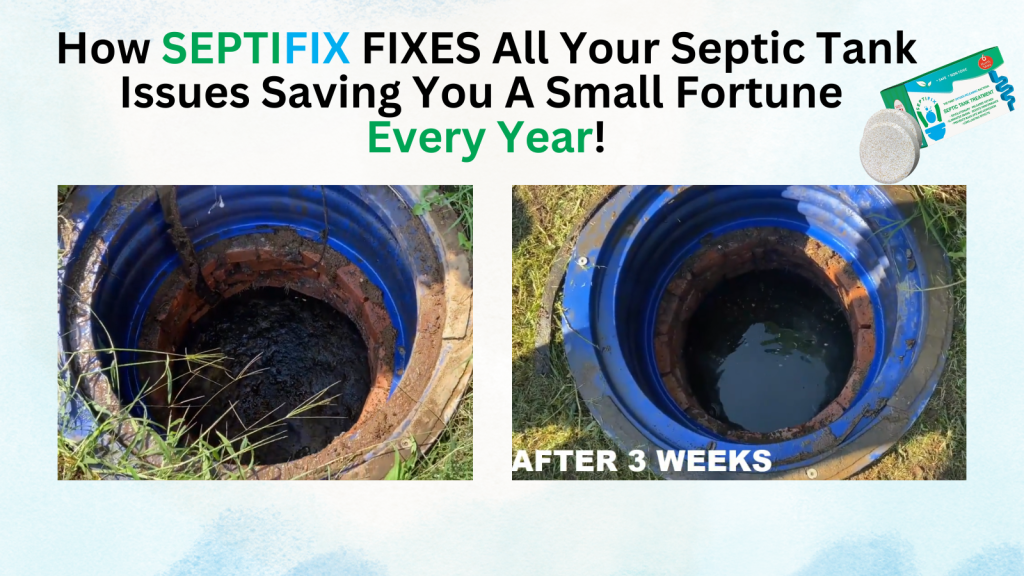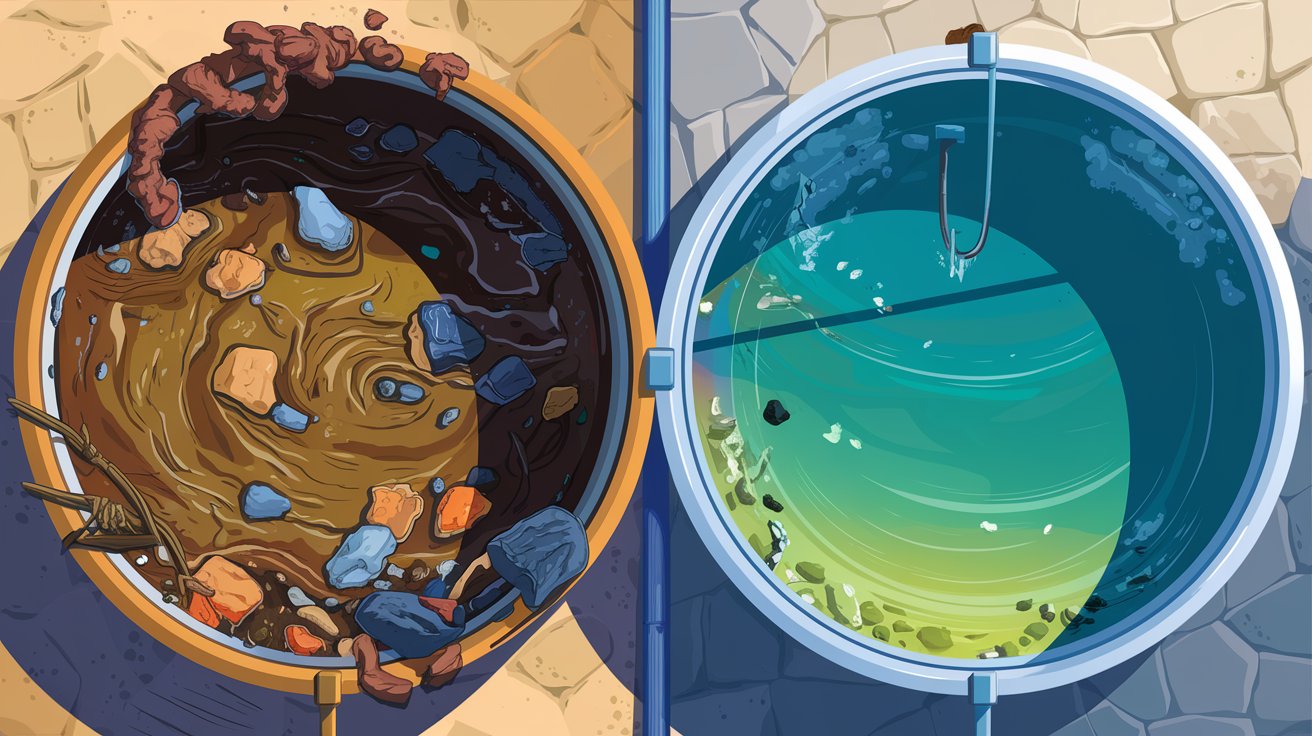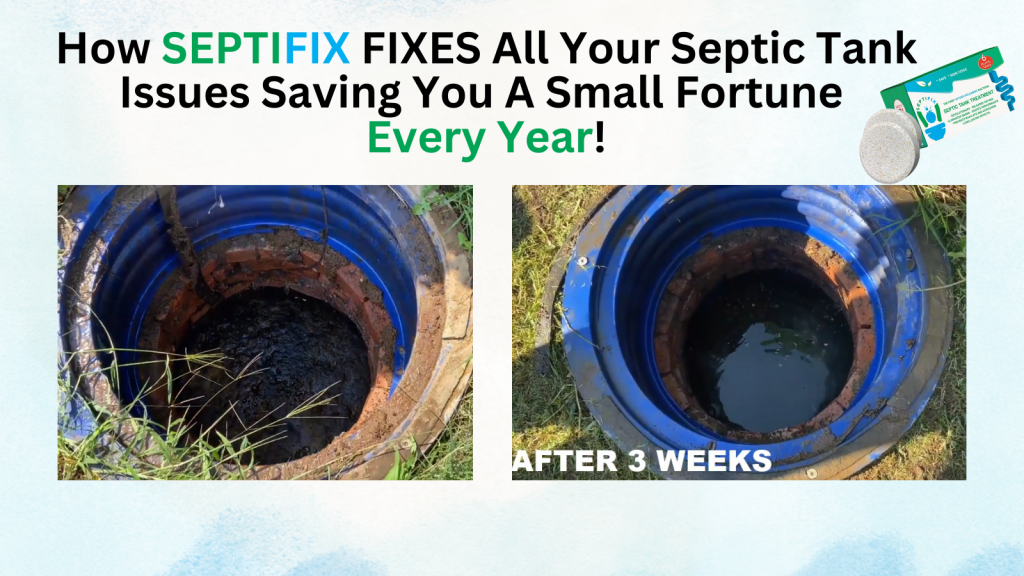Natural septic tank treatments are gaining popularity among homeowners who want safer, eco-conscious ways to care for their on-site wastewater systems. Traditional chemical treatments can disrupt the bacterial balance inside a septic tank and even harm the environment. In contrast, natural treatments aim to support the ecosystem in your tank—helping break down waste efficiently without harsh side effects. In this guide, we’ll explore the most effective natural options and how to use them properly to keep your septic system (or onsite wastewater unit, leach field system, or private sewage tank, as it’s known in different regions) running smoothly.
Table of Contents
- Why Go Natural?
- Best Natural Septic Tank Treatments
- What to Avoid When Using Natural Treatments
- Real-World Tips for Septic System Owners
- Contact Info and Resources
- Conclusion: Small Changes, Big Impact
- Septifix Works Every Time
- Septic Permit Links by State
Why Go Natural?
Supporting Beneficial Bacteria
At the heart of every healthy septic tank is a colony of bacteria breaking down waste. Chemical cleaners and harsh treatments can kill these microbes, leading to clogs, backups, and expensive repairs. Natural treatments help maintain or boost those beneficial bacteria, supporting long-term function.
Environmentally Friendly
Natural treatments are biodegradable, non-toxic, and won’t harm nearby soil, groundwater, or vegetation. For households near lakes, wells, or wetlands, this is especially important.
Best Natural Septic Tank Treatments
1. Bacterial Additives
These are the most common natural treatments. They introduce enzymes and bacteria that help break down organic matter, fats, oils, and grease.
- How to Use: Flush one packet or pour liquid down the toilet monthly.
- What to Look For: Choose a product labeled “all-natural” and free from formaldehyde, phosphates, or synthetic surfactants.
🧪 Pro tip: Some products even target specific issues like soap scum or sludge buildup.
2. Yeast
Believe it or not, basic baking yeast can serve as a starter culture for your septic tank.
- How to Use: Flush ½ cup of dry yeast down the toilet, followed by several gallons of water. Repeat every 3 months.
- Why It Works: Yeast kickstarts digestion by helping natural bacteria multiply.
3. Sugar and Cornmeal
These pantry items serve as prebiotics—they feed the bacteria in your septic system.
- How to Use: Once every few months, flush ¼ cup sugar or cornmeal followed by water.
- Benefits: Boosts microbial growth without introducing anything artificial.
4. Apple Cider Vinegar (ACV)
ACV helps clean pipes without harming septic bacteria. It’s great for gray water systems, too.
- How to Use: Mix 1 cup ACV with 1 gallon of water. Pour down drains monthly.
- Note: ACV is gentle and won’t sterilize your tank like harsh drain cleaners.
5. DIY Septic Booster Recipes
You can also mix natural ingredients for homemade solutions. A simple recipe:
- ½ cup baking soda
- ½ cup vinegar
- ¼ cup lemon juice
Let it foam, then pour it into a sink or toilet. This freshens and mildly cleans without damaging your tank’s bacteria.
What to Avoid When Using Natural Treatments
❌ Bleach and Antibacterial Soaps
Even small amounts of chlorine bleach or antibacterial products can destroy beneficial bacteria in your tank. Try switching to plant-based, biodegradable cleaning products instead.
❌ Overusing Enzyme Products
More isn’t always better. Too much additive can create a microbial imbalance or cause solids to flow into the drain field, leading to clogs.
❌ Flushing “Flushable” Wipes
They don’t break down naturally and can wreak havoc on any septic system—natural or not.
Real-World Tips for Septic System Owners
- Routine Pumping Still Matters: Even if you’re using natural treatments, pump your tank every 3–5 years depending on usage.
- Watch Water Usage: Too much water can flush out helpful bacteria. Install low-flow fixtures and spread out laundry loads.
- Keep a Maintenance Log: Record when you add treatments or have inspections so you can track what’s working.
Contact Info and Resources
If you’re considering switching to natural septic solutions or need help with a failing system, contact a licensed septic professional in your area. Check your state or county’s health department website for local septic care guidelines.
Recommended Resources:
- EPA SepticSmart Program
- National Onsite Wastewater Recycling Association (NOWRA)
- Local septic professionals via your municipal website or environmental health department
Conclusion: Small Changes, Big Impact
Natural septic tank treatments aren’t just a trend—they’re a smart, sustainable way to care for your system. By using bacterial additives, kitchen-friendly prebiotics, or even vinegar-based cleansers, you’re helping your tank work better and last longer. Just remember: natural products complement, not replace, regular pumping and inspections.
✨ Want a healthy, odor-free septic system? Start by going natural and treating your tank with the care it deserves.
Septifix Works Every Time










